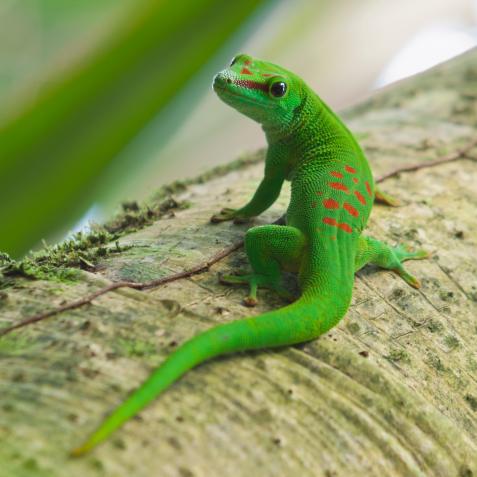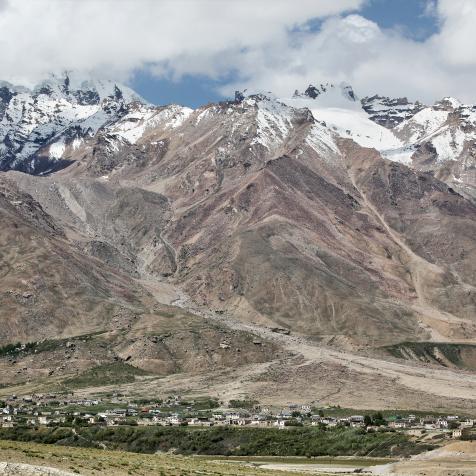
Salvatore Virzi / EyeEm
Volcanology: The Study of Volcanic Activity and Predicting Eruptions
The study of volcanoes and collecting data such as seismic activity, temperature, and chemical changes can help predict eruptions and save lives in the process.
Volcanology (or vulcanology) is the study of volcanoes, their formation and historical activity. Geologists who specialize in observing volcanic activity and visiting active sites are known as volcanologists.
But First, What Are Volcanoes?
The geological phenomenon of magma below the surface erupting from the Earth to form volcanic rock is known simply as volcanism. Magma gathers in the space between the Earth's hot liquid core and the crust and is forced upwards because of its buoyancy compared to denser surrounding rock and gaseous pressure. Rock flows – known as lava – gases, ash, and solid rock then erupt through a break in the crust called a vent.
Around 80% of active terrestrial volcanoes can be found at the boundaries of the Earth's tectonic plates. The plates are formed from the crust and the rigid part of the mantle below that, known as the lithosphere. Where plates converge one dives down below the other back into the mantle – these areas are called subduction zones.
Volcanoes come in different shapes and sizes. Cinder cones are the simplest type, made when magma explodes from a vent then falls to the earth to make a cone of broken cinder. Stratovolcanoes, or composite volcanoes, are the tall, steep volcanic mountains that we often picture, such as Mount Fuji in Japan or Mount St Helens in Washington. They are built up from repeated lava flows, ash, cinder and volcanic bombs (hot rock debris that is also called tephra).

Ralph White
This is an image of congealed lava on Mid-Atlantic Ridge on the ocean floor.
40,000 Miles of Explosions
The most explosive volcanoes form along these subduction zones. But the most numerous volcanoes are formed along mid-ocean ridges formed by two oceanic plates moving away from each other. Oceanic ridge volcanoes form part of the world's longest continuous mountain chain, more than 40,000 miles long, encircling the Earth.
More than 80% of the Earth's surface was formed from volcanic activity, including the oceans and atmosphere. Eruptions can change the planet's weather and climate as well as directly affecting society by displacing people or affecting air travel. In 1991, the eruption of Mount Pinatubo sent ash and gases into the atmosphere. The cloud drifted around the world causing a 0.5 degree Celsius cooling in some regions.
But there are beneficial aspects to volcanism as well as hazardous effects. Eruptions throw out ash and rock particles that are high in oxygen, plus essential elements found in fertilizers such as iron, phosphorus, magnesium, and potassium, creating fertile soils for farming. Extinct volcanoes contain precious and high value industrial metallic deposits including gold, silver, zinc, and copper. Geothermal energy is another byproduct of volcanic systems.

MARK GARLICK/SCIENCE PHOTO LIBRARY
This is a region of tectonic plate boundaries around the Pacific Ocean, where earthquakes and volcanoes are common.
The Ring of Fire
In the United States there are around 170 active volcanoes. More than 50 are in Alaska. The US Geological Survey (USGS) publishes a list of active volcanoes and alerts about potential eruptions. Volcanoes along the west coast and in Alaska are part of the larger Pacific Ring of Fire, also known as the Circum-Pacific Belt.
The Ring of Fire is where many of the world's tectonic plates meet with the Pacific Plate - it's a chain of volcanoes 25,000 miles long that is home to 75% of the world's volcanoes and 90% of earthquakes.
Ash and Destruction
Volcanologists look to predict when vents are active or about to erupt. They use seismographic data to register subterranean activity such as magma moving, gas emissions, temperature increases, or surface deformation caused by magma moving through underground conduits.
Historically, the ash thrown up by the explosive eruptions from stratovolcanoes has been the most hazardous to humans. Stratovolcanoes have more pressure build up from magma flow and so have more powerful eruptions. In 1815, the active Mount Tambora erupted sending 12 cubic miles (50 cubic kilometers) of gas, dust, and rock into the atmosphere.
Chilling effects caused crop failure, famine in North America, and epidemics in Europe. Locally, pyroclastic flows of rapidly moving lava and debris poured down its slopes at more than 100 miles an hour, destroying all in its path. Freshwater sources became contaminated, while crops and forests died.

Photography by Mangiwau
An aerial view looking into Tambora Volcano from the rim of the caldera, on the island of Sumbawa in Indonesia. The 1815 Tambora eruption is the largest observed volcanic eruption in recorded history. The explosion was heard 2,600 km away, and ash fell at least 1,300 km away.
But Wait, What Are Supervolcanoes?
Eruptions are measured by the Volcanic Explosivity Index (VEI) and Mount Tambora was somewhere around seven on the scale of one to eight. But there are more explosive volcanic phenomenon known as supervolcanoes that can create continental devastation. Yellowstone National Park sits on top of such a supervolcano, on a massive volcanic caldera created by its last eruption of eight on the VEI scale 640,000 years ago.
But don't fear the worst. Alongside the USGS alert system, there are many organizations keeping a look out: the Smithsonian Institution's Global Volcanism Program publishes a weekly report. And there's the Vesuvius Observatory, the world's oldest volcanology institute which opened in 1841, and the World Organization of Volcano Observatories who keep a list of them worldwide.
Anyone interested in the duties and life of a volcanologist can find more information through this handy guide on environmental science.


















